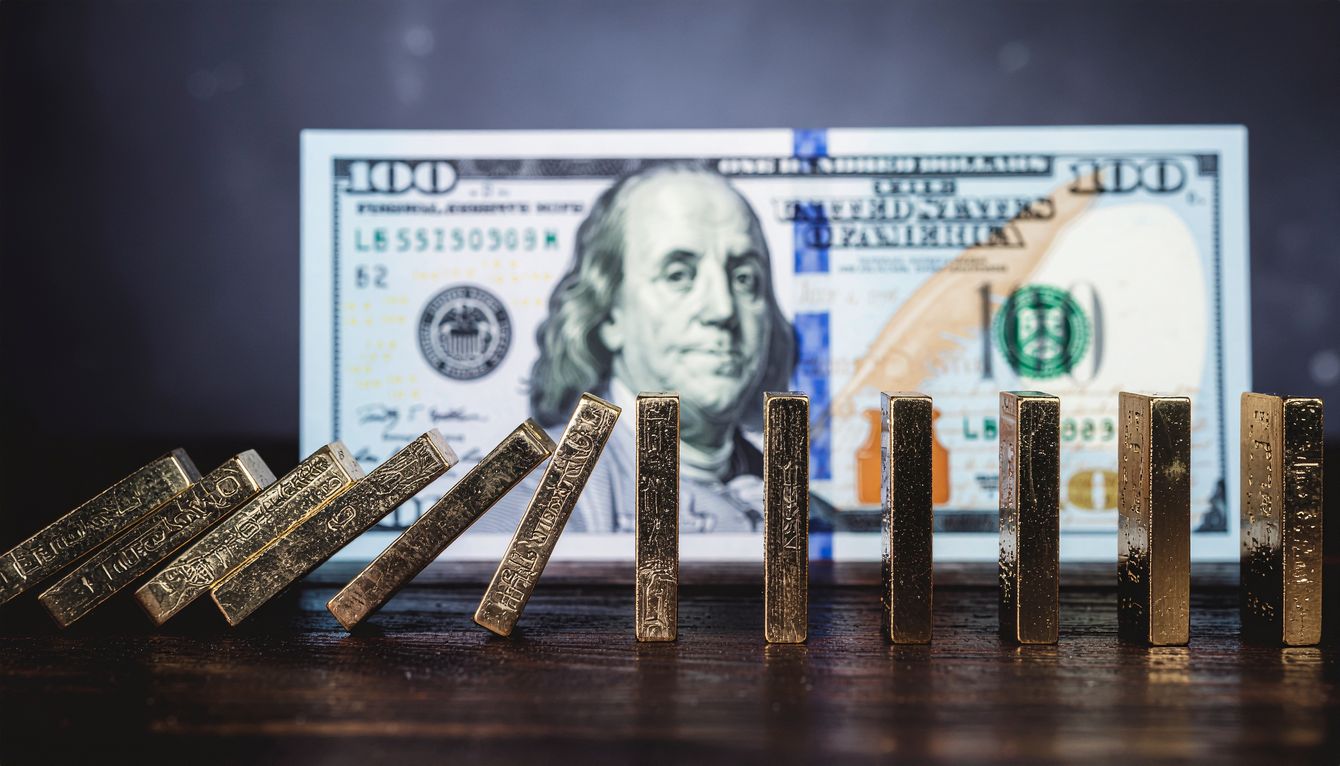Gold's performance in July 2025 has presented investors with a complex narrative of short-term recovery amid longer-term technical concerns. Following a sharp 4.59% decline from the previous week's close, the precious metal managed to regain some composure, with Comex futures advancing $16.40 (0.49%) to trade at $3,344.30 as of 4:30 PM ET. This recovery came after the metal touched an intraday high of $3,366.70 before retreating, while spot gold mirrored this price action at $3,291.70.

The most compelling aspect of gold's current market structure lies in the divergence between spot and futures positioning relative to their respective 100-day simple moving averages. This technical divergence reveals a troubling picture for gold bulls with medium to long-term horizons. While spot gold finds support at its 100-day SMA, futures remain firmly positioned below this critical technical level. This disparity suggests that near-term bullish sentiment may be masking underlying structural weakness in the gold market.
The implications of this technical setup cannot be understated. When futures markets, which typically lead spot prices due to their forward-looking nature, fail to reclaim key moving averages while spot markets hold above them, it often signals that institutional money is less optimistic about future price appreciation than current physical demand might suggest.
July's conclusion allows for a comprehensive assessment of gold's recent trajectory, and the picture is one of remarkable stagnation despite headline-grabbing record highs. Over the past three months, from April's close to current levels, gold futures have declined approximately $40, representing a 1.21% loss. This sideways action is perhaps best illustrated by the formation of three consecutive monthly doji candlesticks, indicating that each month's close approximated its opening level.
Paradoxically, these same monthly candles feature extended upper wicks, visual representations of gold's multiple record-highs that ultimately proved unsustainable. This technical formation suggests that while gold has demonstrated the ability to reach new peaks, it has consistently failed to maintain these elevated levels, indicating potential distribution at higher prices.
The four-month period of relative price stagnation, punctuated by four separate record closing prices, presents a classic case of a market struggling to establish a sustainable upward trajectory. This pattern often emerges when fundamental drivers conflict with technical resistance levels, creating an environment where breakouts fail to sustain momentum.
Silver's Divergent Path and Recent Vulnerability
Silver's performance provides an interesting counterpoint to gold's story, having gained 10.98% or $3.64 since April's close, demonstrating that the precious metals complex has not moved in lockstep. However, this outperformance came under pressure in the final days of July, with silver futures declining today by $0.36 (0.98%) to $36.81.
More concerning for silver bulls was Wednesday's 3.15% decline, which decisively broke support at $37.70—a level that had held firm and represented decade-long highs. Still I am bullish on silver as it stands to benefit from positive trade outcomes.
Federal Reserve Policy and Market Reaction
The Federal Reserve's July FOMC meeting conclusion, which left interest rates unchanged as widely anticipated, triggered an unexpected and dramatic selloff in both precious metals. This market reaction proved particularly puzzling given that the Fed's decision aligned perfectly with market expectations and failed to surprise either investors or analysts.
The counterintuitive response to a non-event highlights the fragile sentiment surrounding precious metals and suggests that traders may be positioning for policy shifts that have yet to materialize. This type of reaction often indicates that markets are oversensitive to Federal Reserve communications, even when those communications contain no new information.
Dollar Strength as the Defining Factor
Perhaps the most significant headwind facing precious metals has been the resurgent strength in the U.S. dollar. The dollar index has posted gains for six consecutive trading sessions, accumulating a 3% advance and breaking above the psychologically important 100 level for the first time since May. This six-day rally has single-handedly defined July's monthly performance for the greenback, which closed the month up 3.39% and ended a six-month losing streak.
The inverse relationship between dollar strength and precious metals prices remains one of the most reliable dynamics in commodity markets. As the dollar strengthens, gold and silver become more expensive for holders of other currencies, typically dampening international demand. The sustained nature of the dollar's recent advance suggests that this headwind may persist, potentially limiting upside potential for precious metals in the near term.
The renewed strength in the U.S. dollar, ending its six-month decline, represents perhaps the most significant challenge facing precious metals moving forward. Until this dynamic shifts, gold and silver may continue to struggle in establishing sustainable upward momentum, despite periodic attempts to reach new highs.
For those that would like more information about our services click here
Wishing you as always good trading,


